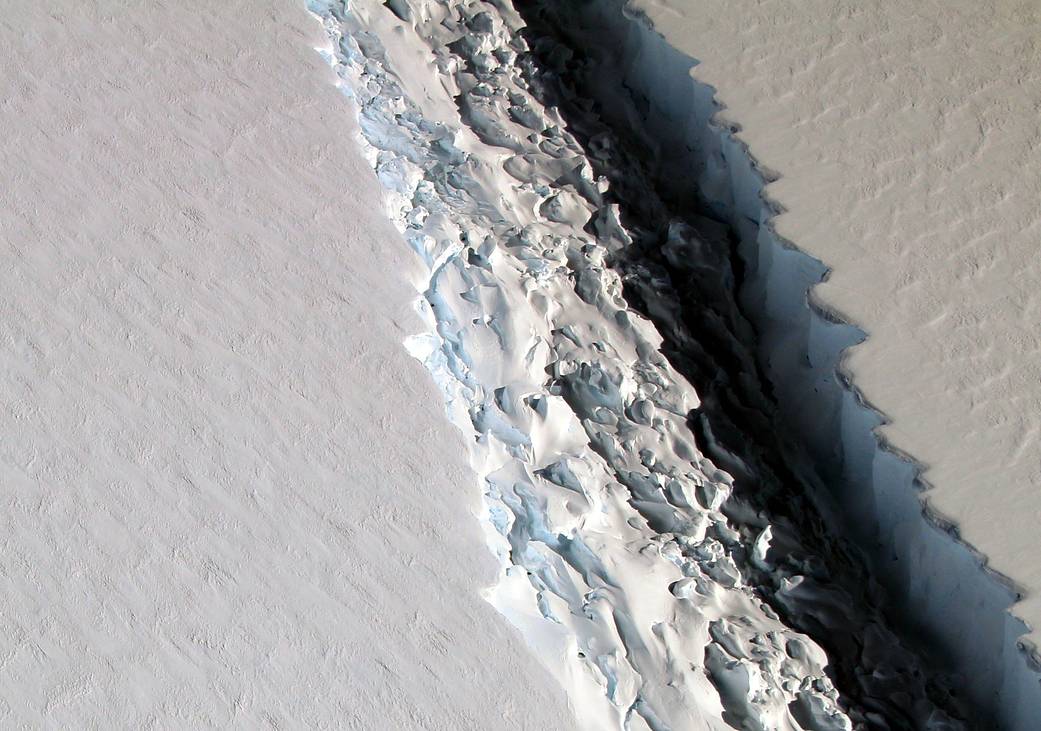News release
From:
Expert Reaction
These comments have been collated by the Science Media Centre to provide a variety of expert perspectives on this issue. Feel free to use these quotes in your stories. Views expressed are the personal opinions of the experts named. They do not represent the views of the SMC or any other organisation unless specifically stated.
Professor Ian Simmonds is from the School of Earth Sciences at The University of Melbourne
The calving of this huge iceberg from the Larsen C ice shelf is deeply troubling. This follows the collapse of part of the Larsen B ice shelf (to the north) in February 2002. The causes of these breakups are similar. Temperatures have risen dramatically in the region over recent decades. This has meant that summer temperatures now frequently get above freezing, and the associated surface melting significantly weakens the ice shelves. In addition the major warming of the sub-surface Antarctic Ocean is strongly impacting on the thick ice shelves from beneath.
This is happening when the area of the Southern Ocean covered by sea ice (floating frozen sea water of thickness about 2 meters) has plummeted to record lows. Monthly record lows (since satellite monitoring started in 1979) were observed in each of the six months October 2016 – March 2017, and second lowest in each of the last three months. This very low coverage is particularly concerning in the summer period, where the newly ice-free ocean can absorb massive amounts of solar heating during the long summer days.
Professor Nathan Bindoff is Professor of Physical Oceanography at the University of Tasmania, Head, of the Oceans and Cryosphere Program at the Institute of Marine and Antarctic Studies (IMAS), a Chief Investigator in the ARC Centre of Excellence in Climate System Science and leader of the Climate Futures program at the ACE CRC
Big 'bergs breaking off the major ice-shelves are a critical component of the story around the fate of the Antarctic Ice Sheet.
The ice shelves buttress the Antarctic Ice Sheet and slow the rate of ice loss from Antarctica. So a major 'berg like this one means we will see an acceleration of the grounded glaciers behind the Larsen C shelf.
Amazingly, this glacier acceleration will contribute to further sea-level rise in next few years. We saw precisely this behaviour for sea-level when the Larsen B ice shelf broke up.
The bigger picture concern is that ice shelves are thinning around Antarctica, implying more events like this one, and more acceleration of the glaciers that feed the ice shelves. To my mind, this is the million dollar question around Antarctica: how fast is it going to melt going into the future?
Assistant Professor Duanne White is from the Institute for Applied Ecology at the University of Canberra
The past few decades have seen collapse of over a dozen ice shelves on the Antarctic Peninsula. Most of these ice shelves, including Larsen C, are now more retreated than at any time since global climate stabilised at the start of the Holocene, ~ 10,000 years ago. The glaciers behind Larsen C hold relatively little ice in the Antarctic context. However, should this be the start of the break-up of Larsen C, it adds weight to the question of the stability of the larger, more southerly ice shelves and ice drainage systems, which have the potential to contribute several metres to sea level rise during the next few centuries.



 Australia; ACT
Australia; ACT


